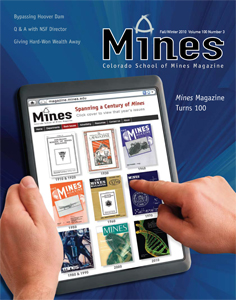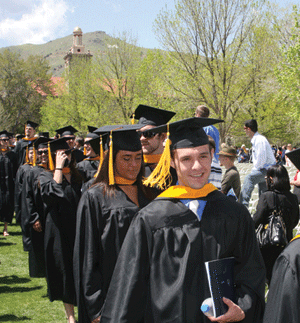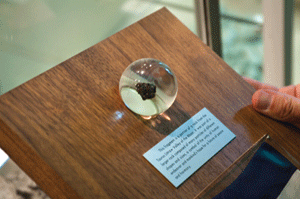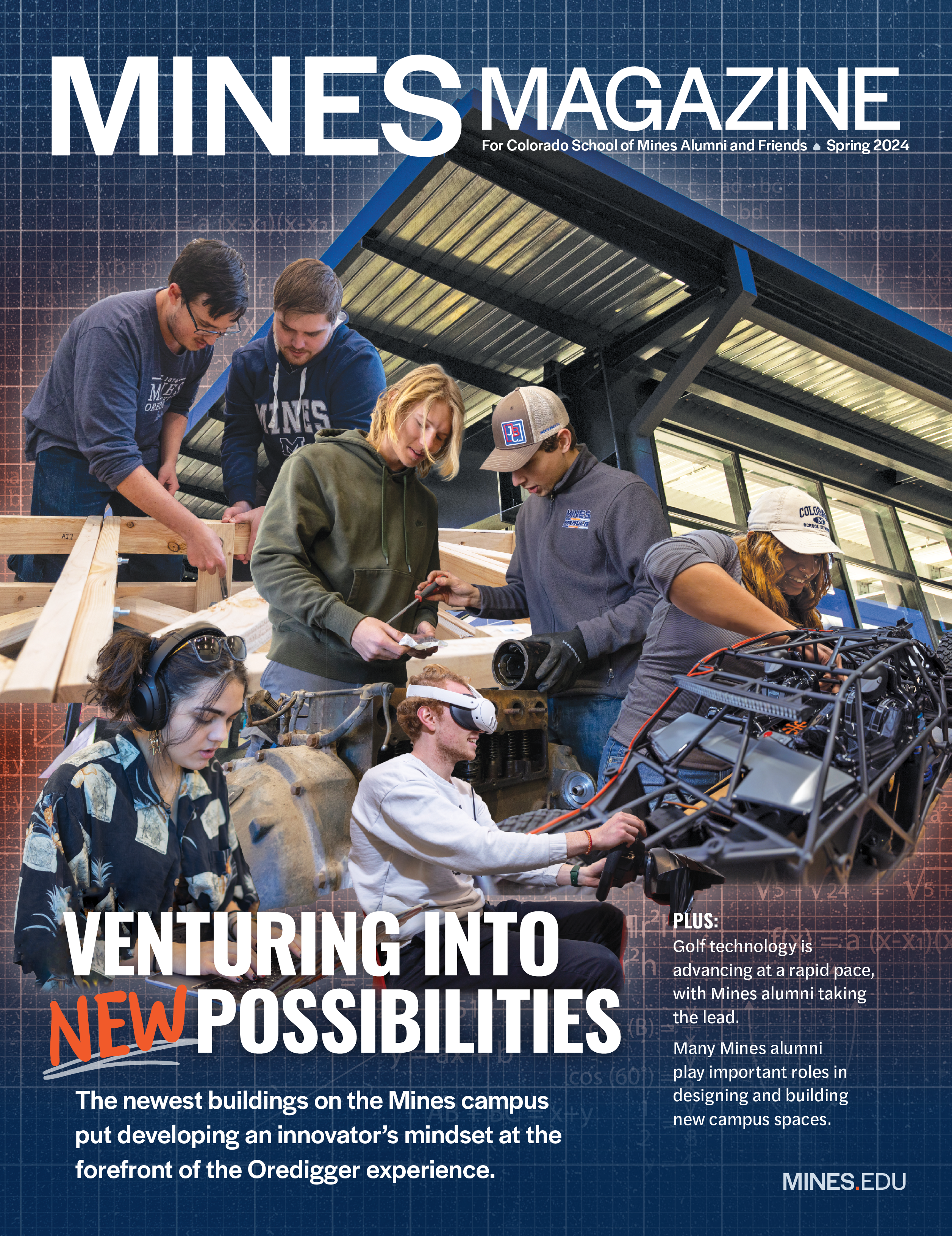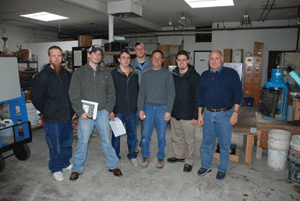
Team members (L to R): Kurtis Greenman ’08; Tony Gargaro ’08; Steve Schneiter ’09, MS ’10; Trevor Mascovich ’08; Michael Katz (contractor); Brad Bettag ’08; Gary Collaizzi ’70 (assisted with project)
When Sue McMahon steps into her backyard in Lakewood, Colorado, these days, it’s a lot quieter than it used to be. She credits this to an award-winning sound-wall designed by Mines engineering students that has reduced traffic noise from Sixth Avenue that abuts her property.
“They researched it, and they did a good job,” �says McMahon. “This is something that homeowners can afford, that will look decent and will still work. We are so excited about this.”
In 2001, when the speed limit on Sixth Avenue was raised, traffic noise increased. In 2006, when the road was repaved, McMahon was able to convince the Colorado Department of Transportation to follow the suggestion of another team of Mines engineering students to use a stonematrix asphalt that reduces traffic noise by about 5 decibels. It helped, but she knew more could be done.
With the support of Sen. Moe Keller, McMahon secured a $224,000 Advanced Technology Grant for construction of an experimental sound wall that was composed of 15 percent shredded used tires, the grant tapped into funds from tire recycling programs. Since Mines students had come up with the repaving idea, McMahon contacted David Mu�oz, an associate professor of engineering at Mines.
In 2008, students in the two-course Senior Design class took preconstruction noise level readings and then went about designing 750 feet of the 1,050-foot sound wall along the frontage road. It would be 8 feet high and would adjoin a 300-foot-long CDOT sound wall that also incorporated recycled tires. Mu�oz advised the student team, which included Kurtis Greenman ’08, Tony Gargaro ’08, Steve Schneiter ’08, Trevor Mascovich ’08 and Brad Bettag ’08.
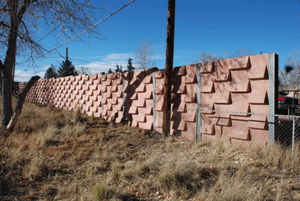
A portion of the sound wall: rubber content of concrete promotes sound absorption, while non-uniform deflection surfaces diffuse sound waves and direct upward.
Bettag says since team members were only working on the north side of Sixth Avenue, they worried that the wall would amplify sound on the south side. “To account for that, we wanted to angle our wall upward at a slight angle to reflect sound over Red Rocks Community College on the south side of the highway. From there we incorporated the angles in an aesthetically pleasing way and alternated them to get some sound cancellation and wave interference,” says Bettag.
“By thinking one or two steps ahead, we saved the city from having to do additional mitigation on the other side of the freeway.”
After construction was completed in spring 2010, the project, which used 3,330 recycled tires, won the 2010 City of Lakewood Community Sustainability Award.
Brenda Gillen


